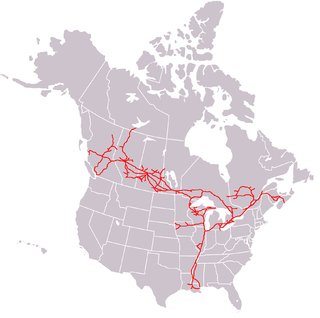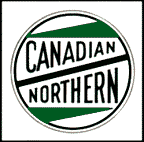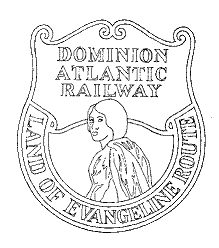
The Canadian Pacific Railway, also known simply as CPR or Canadian Pacific and formerly as CP Rail (1968–1996), was a Canadian Class I railway incorporated in 1881. The railway was owned by Canadian Pacific Railway Limited, which began operations as legal owner in a corporate restructuring in 2001.

The Canadian National Railway Company is a Canadian Class I freight railway headquartered in Montreal, Quebec, which serves Canada and the Midwestern and Southern United States.

Waterfront station is a major intermodal public transportation facility and the main transit terminus in Vancouver, British Columbia, Canada. It is located on West Cordova Street in Downtown Vancouver, between Granville and Seymour Street. The station is also accessible via two other street-level entrances, one on Howe Street to the west for direct access to the Expo Line and another on Granville Street to the south for direct access to the Canada Line.

The Canadian Northern Railway (CNoR) was a historic Canadian transcontinental railway. At its 1923 merger into the Canadian National Railway, the CNoR owned a main line between Quebec City and Vancouver via Ottawa, Winnipeg, and Edmonton.
The National Transcontinental Railway (NTR) was a historic railway between Winnipeg and Moncton in Canada. Much of the line is now operated by the Canadian National Railway.

The Canadian is a transcontinental passenger train operated by Via Rail with service between Union Station in Toronto, Ontario, and Pacific Central Station in Vancouver, British Columbia, Canada.

The Dominion Atlantic Railway was a historic railway which operated in the western part of Nova Scotia in Canada, primarily through an agricultural district known as the Annapolis Valley.

The International Railway of Maine was a historic railroad constructed by the Canadian Pacific Railway (CPR) between Lac-Mégantic, Quebec, and Mattawamkeag, Maine, closing a key gap in the railway's transcontinental main line to the port of Saint John, New Brunswick.

The Super Continental was a transcontinental Canadian passenger train operated by the Canadian National Railway from 1955 until 1977, when Via Rail took over the train and ran it until it was cancelled in 1981. Service was restored in 1985 but was again eliminated in 1990. The original CN train had a Montreal–Ottawa–Toronto-Winnipeg–Saskatoon–Edmonton–Jasper–Vancouver routing with daily service.
Canadian Pacific Limited was created in 1971 to own properties formerly owned by Canadian Pacific Railway (CPR), a transportation and mining giant in Canada. In October 2001, CPR completed the corporate spin-offs of each of the remaining businesses it had not sold, including Canadian Pacific Railway Limited.

The Imperial Limited was the Canadian Pacific Railway's premier passenger train across Canada between Montreal, Quebec and Vancouver, British Columbia. It began operation June 18, 1899, seven days a week as a seasonal service supplementing the six days per week eastward Atlantic Express and its westward counterpart, the Pacific Express. It catered to travellers wanting to see the scenic Rocky Mountains and to vacation there. It was these well-to-do people that Sir William Cornelius Van Horne sought to attract in ever-increasing numbers, to travel to Canada, many on Canadian Pacific's ocean ships, then on Canadian Pacific's trains and to stay in Canadian Pacific's chalets at Banff Springs Hotel and Chateau Lake Louise. His famous quote was: "Since we can't export the scenery, we will have to import the tourists". And import them he did, in ever greater numbers.

The Atlantic was a passenger train operated by Via Rail, serving both Canadian and U.S. territory between Montreal, Quebec and Halifax, Nova Scotia. It was previously operated by Canadian Pacific Railway as The Atlantic Limited between Montreal and Saint John, New Brunswick. It formed part of the transcontinental service for both systems.

The Royal Hudsons are a series of semi-streamlined 4-6-4 "Hudson" type steam locomotives formerly owned and operated by the Canadian Pacific Railway (CPR) and built by Montreal Locomotive Works (MLW). The engines were built in 1937. In 1939, King George VI allowed the CPR to use the term after Royal Hudson number 2850 transported the royal train across Canada with no need of replacement. These locomotives were in service between 1937 and 1960. Four of them have been preserved. No. 2839 was used to power excursions for the Southern Railway Steam Program between 1979 and 1980. No. 2860 was used for excursion service in British Columbia between 1974 and 1999, then again between 2006 and 2010.

Windsor Station is a former railway station in Montreal, Quebec, Canada. It used to be the city's Canadian Pacific Railway (CPR) station, and served as the headquarters of CPR from 1889 to 1996. It is bordered by Avenue des Canadiens-de-Montréal to the north, Peel Street to the east, Saint Antoine Street to the south and the Bell Centre to the west.

The Huron Central Railway is a railway operating in northern Ontario, Canada. It is operated by Genesee & Wyoming Canada, the Canadian subsidiary of Genesee & Wyoming.

The Canadian Atlantic Railway (CAR) was a Canadian and U.S. railway that existed from 1988 to 1994.
The Eastern Maine Railway Company Limited is a 99.5 mi (160.1 km) U.S. short line railroad owned by the New Brunswick Railway Company, a holding company that is part of "Irving Transportation Services", a division within the industrial conglomerate J.D. Irving Limited.
South River Railway Station is located in the community of South River in Ontario. The station was originally constructed by the Northern and Pacific Junction Railway, a subsidiary of the Northern and Northwestern Railway, in 1884. It was subsequently owned and operated by the Grand Trunk Railway and Canadian National Railways. It was a significant station stop along the historic route connecting Toronto to North Bay, and the Canadian Pacific Railway (1885). Transcontinental trains traveling between Toronto and Vancouver once frequented the station. It is likely the oldest wooden railway station in north-eastern Ontario. It is now a community heritage building in the town of South River.

The MacTier Subdivision is a major rail line in Ontario, Canada, which is owned and operated by the Canadian Pacific Kansas City. The line stretches 126.9 mi (204.2 km) from Toronto in the south to MacTier in northern Muskoka. The MacTier Subdivision is the easternmost section of CPKC's present-day transcontinental route and is the railway's only connection between its eastern and western holdings which is fully within Canada. The route is single-track in its entirety and hosts only freight rail service. Between 1955 and 1978 the MacTier Subdivision hosted CPR's premier transcontinental passenger train, the Canadian, from Toronto to Vancouver. Operation of the Canadian was transferred to Via Rail in 1978, which switched over to CNR's Newmarket Subdivision, rejoining the former CPR route at Parry Sound, 23 mi (37 km) north of MacTier.
The Canadian and later, Canadian-Niagara, was the longest running named international train from Chicago to Upper Canada via Detroit, for its first two decades running to Montreal. This overnight train was operated by the Michigan Central Railroad from Chicago to Detroit, and in a pool arrangement, it operated over Canadian Pacific Railway tracks and used the same train number from Detroit eastward. The train would carry a second section, bound, variously for Buffalo or New York City via Buffalo.















